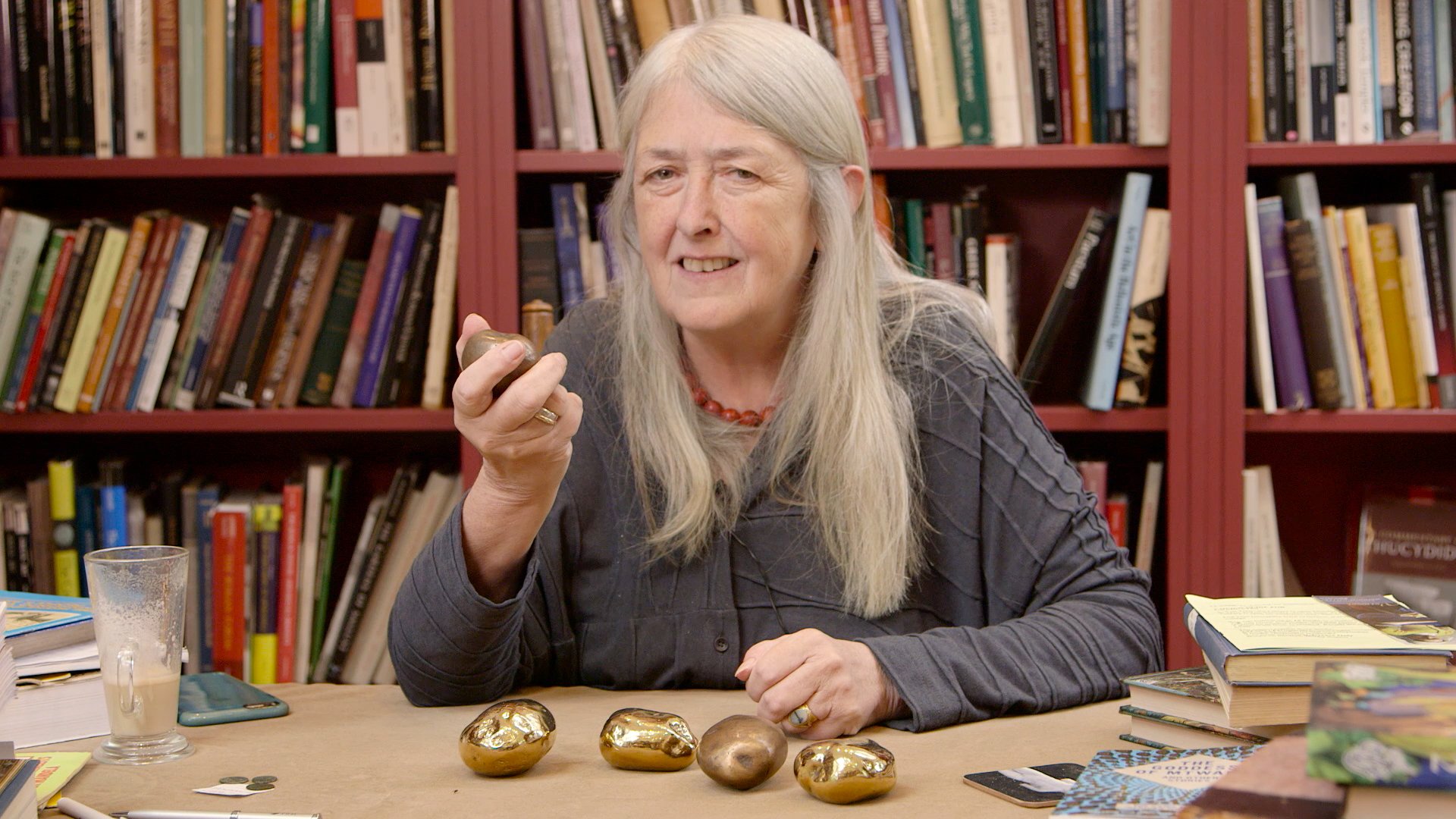
“Frieze is probably beyond the Romans, but I think Cicero would love it,” Mary Beard told artnet News this afternoon, holding a flute of pink champagne and standing in what is perhaps the most striking booth at the Frieze Art Fair in London. “They’d need a little practice, but I think they’d fit in here like a dream.”
What is one of the world’s leading scholars of Classics doing at a contemporary art fair? Beard, a professor at Cambridge and the Royal Academy of Arts, collaborated with Hauser & Wirth to transform its stand into an imaginary regional museum filled with bronze works spanning five centuries. The historic objects are on loan from private collections and small museums across the UK. Beard also has recorded a custom audio guide to some of the displays.
To recreate the musty, stodgy feel of an underfunded local museum, the gallery ignored no detail—and spared no expense. Hauser & Wirth’s senior director Neil Wenman, who conceived the project, even sourced museum-quality locks for each vitrine. They cost around £300 a pop.
Hauser & Wirth at Frieze London, 2017, “Bronze Age c. 3500 BC–AD 2017.” Photo: Alex Delfanne, courtesy of the artists, estates, and Hauser & Wirth.
There are reclaimed office tiles on the floor, fluorescent lights hanging from the ceiling, artificially scuffed baseboards, and satirical information plaques. There is even a small gift shop selling postcards and mugs.
“Brits definitely recognize this [kind of] establishment,” Beard said. “It’s an institution that is very much loved, even if we only went there as schoolchildren and nobody spends much money on it.” The prospect of promoting the value of these often-overlooked museums is what motivated her to participate in the project, she said.
The proceeds from souvenir sales will be donated to the lending institutions; Hauser & Wirth is also making an additional donation to each one in Beard’s name.
Around 60 percent of the institutions approached by the gallery agreed to participate in the project, titled “BRONZE AGE c. 3500 BC–AD 2017.” “Some saw the humor immediately,” Wenman said. “Others misread it totally and didn’t want to be a part of it.”
Interspersed among the arrowheads and figurines on loan from institutions including the Burton Museum and the Museo de Menorca are objects at two ends of the price spectrum: bronze curios purchased on eBay and works for sale by contemporary artists including Louise Bourgeois, David Smith, and Rashid Johnson. Paul McCarthy’s bronze Santa With Butt Plug cuts an amusing figure next to bowls and arrows.
Hauser & Wirth at Frieze London, 2017, “Bronze Age c. 3500 BC–AD 2017.” Photo: Alex Delfanne, courtesy of the artists, estates, and Hauser & Wirth.
Bronze is a fitting choice for a deceptively century-spanning display, according to Beard, because “archeologically, it is very hard to date.”
But what might the subjects of her research think of the contemporary art-fair phenomenon? Beard said the Romans would have had a ball at Frieze—the Greeks, not so much. “The thinking is that the Greeks were making art for the city, while the Romans commercialized it,” she said.
The Romans had antique shops, sought to properly date works of art, and developed an art market. Think prices are outrageous now? As it turns out, that’s nothing new. “Cicero was desperate to get sculptures from Greece, but they were bloody pricey,” Beard said.
Tension between the private and public sectors also stretches back to antiquity. Beard recalled a particularly controversial episode in which Emperor Tiberius de-installed a work of public art and put it on view at his palace. (Consider him, if you will, the Eli Broad of the ancient world.)
Hauser & Wirth at Frieze London, 2017, “Bronze Age c. 3500 BC–AD 2017.” Photo: Alex Delfanne, courtesy of the artists, estates, and Hauser & Wirth.
One difference between collecting in ancient times and collecting today? “By and large, Roman collecting was pretty monocultural—they had Greek and Mediterranean art,” Beard said. If the Steve Cohens and Charles Saatchis of ancient Rome were to take a spin around Frieze, they’d be very surprised to find that there was no single culture or nation behind the art on view.
(Still, she said, there are signs that a few forward-thinking ancient collections did have an international bent—an Indian figurine was found among the ruins of Pompeii.)
The kind of whimsy represented by the Hauser & Wirth booth sells, it seems. By the end of the fair’s VIP preview on Wednesday, the gallery had sold a sculpture by Hans Arp priced at $1.1 million to a private collection in Los Angeles, a work by Subodh Gupta for €150,000, a bronze panel by Johnson for $120,000, and a sculpture by Martin Creed for $75,000.